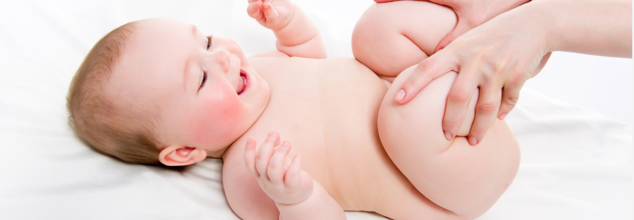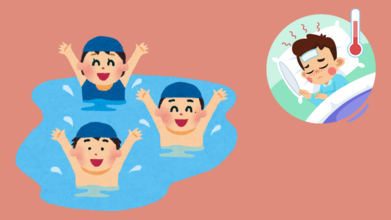- Health Conditions A-Z
- Health & Wellness
- Nutrition
- Fitness
- Health News
- Ayurveda
- Videos
- Medicine A-Z
- Parenting
- Web Stories
Is Your Baby Crying Nonstop? Here’s How To Relieve Gas Instantly

Image credit: Canva
Babies cry—it's their way of expressing hunger, discomfort, and even fatigue. But when your baby cries endlessly and appears very cranky, gas might be the cause. Although gas is a natural function of digestion, too much accumulation of gas results in pain and discomfort for you and your infant as well. Knowing the reasons, symptoms, and remedies may bring relief to your infant.
Managing a gassy baby can be nerve-wracking, but using the right approaches, you can ease their pain and keep them content. Learning the underlying reasons, identifying symptoms, and putting practical measures in place can work wonders. With the passage of time, your baby's digestive system will grow stronger, and gas-related distress will become minimal—until then, a bit of patience, tender handling, and calming measures can work wonders in keeping both you and your baby comfortable.
Why Is Your Baby So Gassy?
Infant gas is normal, particularly in babies ages 1-4 months old. Their still-developing gut makes them particularly prone to trapped gas. Here are some main reasons why:
1. Ingestion of Air During Nursing or Bottle-Nursing
If your little one has a poor latch with breastfeeding or bottle-feeding, they can gulp down extra air, which would form gas bubbles in their miniature tummies.
2. Food Allergies
Formula-fed infants can respond to some of the proteins in milk, whereas breastfed infants can become sensitive to foods eaten by their mother.
3. Crying and Swallowing Air
Overexuberant crying can result in more air being swallowed, which can lead to further gas.
4. Constipation
Rare in newborns, but constipation can produce bloating, discomfort, and resulting gas pain.
Sign Your Baby Has Gas
Gas can be difficult to detect because babies cry for so many reasons. That being said, if your child has the following symptoms, gas is probably responsible:
- Excessive burping and farting
- Bringinging legs up close to their abdomen
- Curving back in distress
- Bloated or swollen belly
- Complaining after feedings
If gas is responsible for upset, there are a few ways to relieve immediately and effectively.
How to Relieve Your Baby's Gas in an Instant
1. Burp Your Baby Often
Burping is also a simple way to avoid and calm gas. Give burping a try:
- After each few minutes during feeding
- Between changing breasts
- Every few ounces while bottle-feeding
If the burp doesn't come easily, place your baby on his back for a few seconds, and then attempt to burp him again.
2. Change Feeding Positions
Keeping your baby in a more upright position during feeding helps milk or formula settle in their stomach and avoids taking in too much air. Make sure the bottle nipple is never full of air but always milk to reduce gas bubbles.
3. Use a Gas-Reducing Bottle
If you’re bottle-feeding, opt for bottles designed to reduce air intake. These often have venting systems that help keep air bubbles out of the milk, reducing gas.
4. Massage Your Baby’s Belly
Gentle massage can help break up gas bubbles and promote digestion. Try:
- Rubbing your baby’s belly in a clockwise motion
- Placing your baby on your lap, tummy down, and gently patting their back
- Applying light pressure with your fingers to stroke downwards on the belly
5. Attempt the Bicycle Leg Exercise
Place your baby on their back and slowly move their legs in a bicycling motion. This action releases trapped gas and encourages healthy digestion.
6. Apply a Warm Compress or Bath
A warm bath can ease the muscles of your baby and alleviate tummy ache. Alternatively, applying a warm (not scalding) towel to their belly can work wonders in alleviating cramps.
7. Encourage Tummy Time
Tummy time strengthens your baby's core muscles while also putting gentle pressure on their stomach, which might help release gas that is stuck. Attempt to position your baby on their tummy for several minutes at a time, making sure to keep them safe and comfortable.
How to Prevent Gas in Babies?
Even though the occasional gas is inevitable, these preventive measures can limit its occurrence:
Watch for Cues of Hunger – Feed your infant before he becomes desperate, because crying brings about more intake of air.
Adjust Your Diet (For Mothers Who Breastfeed) – Some foods such as dairy, cruciferous vegetables, and caffeine are known to be the causes of gas in breastfed babies. Maintain a food diary in order to note any sensitivities.
Select the Right Formula – If formula-fed, ask your pediatrician if a different formula could be easier on your baby's stomach.
Don't Overfeed – More frequent, smaller feedings may be less difficult for your baby to digest.
When to Call the Doctor?
Although gas is usually harmless, ongoing symptoms can signal an underlying problem. Call your pediatrician if your baby has:
- Frequent vomiting
- Blood in stool
- Chronic diarrhea or constipation
- Severe fussiness that does not get better with gas-relief methods
- Temperature of 100.4°F (38°C) or higher
A Viral Instagram Post Makes Several Claims On What Makes Your Kids Sick After A Swimming Session, We Fact Checked It For You, Here's What We Found

Credits: Canva
As summers are here and so are the pool sessions, an Instagram post is making rounds on the social media platform by Ilia Ototiuk, who calls himself an ambassador of discipline, mental and physical wellbeing. The post lists down the reason why kids get sick after a swimming session. The post mentions that the reason is not water, but something else. Health And Me decided to fact check each claim made on the post, and here is what we found.
Claim #1: “The problem isn’t cold water or swallowing pool water.”
Fact Check
According to the US Centers for Disease Control and Prevention (CDC), swallowing or inhaling contaminated pool water can absolutely cause illness. particularly gastrointestinal infections like diarrhea. Germs such as Cryptosporidium can survive for over a week in properly treated pools. While temperature itself doesn’t directly cause colds, swallowing pool water can spread pathogens.
Verdict: Cold water alone won’t give a child a cold, but contaminated water can cause infections.
Claim #2: “The real immune crash happens right after getting out. The body is warm, skin is wet...”
Fact Check
The claim that wet skin and drafts cause an “immune system shutdown” isn’t supported by medical evidence. What actually happens is explained by US Masters Swimming: sudden exposure to cold water can trigger cold water shock, affecting heart rate, breathing, and circulation. Extended exposure can lead to hypothermia or afterdrop (continued cooling even after leaving the water).
Verdict: The body does not “shut down immunity.” Instead, risks are linked to cold-water shock and hypothermia, especially if kids don’t warm up quickly after swimming.
Claim #3: “Sitting around in wet swimsuits for 5–10 minutes makes the body vulnerable.”
Fact Check
As per Texas A&M Health and the Mayo Clinic, sitting in wet swimsuits doesn’t cause colds, but it can cause fungal infections (like yeast infections or jock itch) and skin irritation from chafing. Prolonged dampness makes an ideal environment for fungi and bacteria.
Verdict: The real risk is fungal or bacterial skin infections, not colds. Parents should change kids into dry clothes quickly after swimming.
Claim #4: “Not drying hair causes sinus overload and colds.”
Fact Check
The Cleveland Clinic explains that wet hair itself does not cause colds. Viruses such as rhinovirus are the culprits, not damp scalps. While cold environments may help viruses spread more easily, wet hair is not a direct cause of runny noses, sore throats, or fevers.
Verdict: Leaving hair wet or letting it "air dry" won’t cause colds. However, drying kids’ hair after swimming can help them stay comfortable and prevent feeling chilled.
Claim #5: “Skipping post-swim snacks weakens immunity.”
Fact Check
According to the BBC 2023 report, post-exercise nutrition is important, especially within 30–60 minutes after swimming. The body needs carbohydrates to replenish glycogen and protein to repair muscles. Skipping food doesn’t directly cause infections, but poor recovery can increase fatigue and stress, making the body less resilient.
Verdict: It’s true that kids should eat a balanced snack after swimming, ideally carbs + protein, but saying “immunity weakens” without food is an exaggeration.
Fact Check: Is Giving Birth On Your Back Against Your Body's Natural Anatomy?

Credits: Canva
"I may or may not burst some bubbles with this comment, but what if I told you that your pelvis was in fact not too small and or that your baby's head was in fact not too big?" says Amber Grimmett, a US-based Pregnancy and
Postpartum Coach. In her post, she also writes that the position most women give birth in, also called the lithotomy position or lying on your back is "against your body's natural birth mechanics". In a video she posted on her Instagram @fierce.not.fragile, she talks about pelvis and baby's head size, explaining how the birthing position that has been made standard may not be right.
She says that when the mother lies flat on her back with knees wide, her tailbone cannot move freely and the pelvic outlet, the space baby needs to exit, "literally closes off".
This, she says, creates a domino effect. Then comes longer labors, more interventions, and higher risk of pelvic floor dysfunction. "Your body was designed to birth, but not in positions that fight against its natural design," she writes.
What Does Science say?
We did a fact check on her claim and here's what we found.
For most women in the United States today, giving birth means lying on a bed, feet in stirrups, and being told when and how to push. But mounting research, including a 2014 study published in The Journal of Perinatal Education, titled, 'Healthy Birth Practice #5: Avoid Giving Birth on Your Back and Follow Your Body’s Urge to Push' suggests this common practice, known as the supine or lithotomy position—might not actually be the safest or most effective way to bring a baby into the world.
How Birth Ended Up on Its Back
For centuries, women birthed in positions that worked with gravity, standing, squatting, sitting, or even using stools or ropes for leverage. These upright positions made physiological sense: gravity helped the baby descend, shortened labor, and reduced maternal fatigue.
Then came King Louis XIV of France. Fascinated by childbirth, he reportedly preferred to watch his mistresses deliver, and lying flat gave him the best view. The practice caught on among European aristocracy and eventually spread widely.
By the early 1900s, births had largely moved from homes to hospitals. Doctors saw childbirth less as a natural process and more as a medical procedure. Putting women on their backs gave physicians easier access for interventions such as forceps delivery, anesthesia, and continuous fetal monitoring. Convenience for the doctor—not necessarily benefit for the mother or baby, became the standard.
The Problem with the Supine Position
Research over the past three decades has consistently shown that giving birth lying flat has no clear benefits for either mother or baby. In fact, there are multiple disadvantages:
- Longer Labor: When women lie flat, the baby must work against gravity, which can slow descent.
- Narrower Pelvis: The supine position can actually reduce pelvic diameter, making delivery more difficult.
- Increased Risk of Interventions: Supine births are linked with more use of forceps, vacuum deliveries, and episiotomies.
- Reduced Blood Flow: Lying on the back can compress major blood vessels behind the uterus, reducing blood flow to the baby.
- More Perineal Trauma: Directed, forceful pushing while on the back is associated with more tears and a weakened pelvic floor, raising the risk of urinary incontinence later.
Despite this, U.S. survey data shows that nearly 70% of births still happen in supine or lithotomy positions, with fewer than 10% of women using traditional squatting, standing, or side-lying positions.
The Case for Upright and Spontaneous Pushing
Standing, kneeling, and squatting use gravity to help the baby descend and can even widen the pelvic outlet, giving more room for delivery. Even side-lying, which is gravity-neutral, has been shown to reduce perineal tearing.
Equally important is how women push. Many hospitals still direct women to push forcefully for long periods, holding their breath. But evidence shows that spontaneous, self-directed pushing—where the woman follows her own urge, improves oxygenation, reduces maternal stress, and lowers the risk of fetal distress.
In fact, research has found that directed pushing only shortens labor by about 13 minutes on average, a difference not considered clinically significant but one that may come at the cost of pelvic floor damage.
Rethinking Hospital Policies
Some hospitals have strict time limits on how long the second stage of labor (pushing phase) can last before recommending interventions such as a C-section, even if there are no signs of danger for mother or baby. Recent guidelines from the American College of Obstetricians and Gynecologists (ACOG) now acknowledge that the second stage can safely last much longer, up to five hours for first-time mothers with an epidural.
However, there is little emphasis on letting women move freely, change positions, or delay pushing until their natural urge returns. This gap between research and practice persists, though midwives and doulas are often more supportive of these evidence-based approaches.
Your Children Are Not At Fault For Being Lazy, You Are: Study Finds The Effect Of Inactive Parents On Children

(Credit- Canva)
Getting children to be active and socialize is a big part of parenting. Even kids, no matter how energetic they are, like lazing around and relaxing. However, this habit can catch on quick, but they are not entirely at fault for it.
A new study has found a strong connection between what parents do and how active their kids are. It turns out that children are more likely to be "couch potatoes" or full of energy based on what they see their moms and dads doing every day.
In a study published in the journal Sports Medicine and Health Science. Researchers showed that when parents have an active routine, their children are less likely to sit still for long periods. The study followed 182 kids and their parents for a week and found that children of inactive parents were more sedentary, while those with active parents were more active themselves.
Do Mothers Influence Their Kids More Than Fathers?
Interestingly, the study discovered that mothers have more than twice the influence of fathers on their children's physical activity. This finding held true even when the researchers considered other things like the family’s income or the child’s age. The experts believe that active parents not only know how important exercise is but also actively encourage their kids. They might be more likely to limit screen time and support activity by taking their children to the park, buying sports equipment, or setting up games in the backyard.
How Can We Encourage Kids to Be More Active?
While a lack of time or safe places to play can make it hard for kids to be active, this study highlights how important a parent's example is. The results suggest that by promoting active habits within families, we can improve the health of the next generation. The researchers believe these findings can be used to create public campaigns and policies that encourage families to live a more active lifestyle together.
How Can Lack Of Activity in Children Affect Their Health?
According to the American Heart Association, physical activity is vital for everyone, but it’s especially important for helping children grow into healthy adults. They suggests that kids and teens (ages 6–17) should get at least 60 minutes of moderate to vigorous physical activity every day. In a world full of digital distractions, it can be a challenge to get kids moving, but teaching them healthy habits now can set them up for a lifetime of well-being.
Kids are naturally active, but they often become less so as they get older, especially girls. If your child's interests change, that's okay—the key is to help them find a new activity they enjoy.
- Be active yourself and find ways to get the whole family moving together.
- Encourage your kids to choose activities they genuinely like. Don't use physical activity as a form of punishment.
- Reduce the amount of time they spend on devices, watching TV, or playing video games.
- Give them toys and equipment like bikes, skateboards, and balls.
- Encourage them to join sports or other activities like dance or swimming. Explore local parks, pools, and bike paths.
- If your child is currently inactive, begin with small, gradual steps to avoid injury or discouragement.
- Reward and encourage your kids for their efforts to help them stay motivated.
© 2024 Bennett, Coleman & Company Limited

